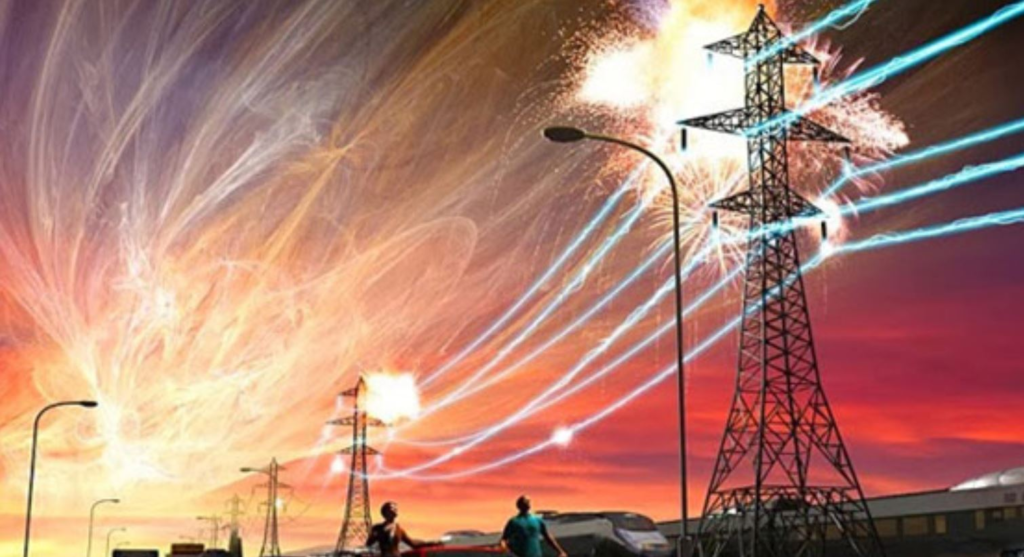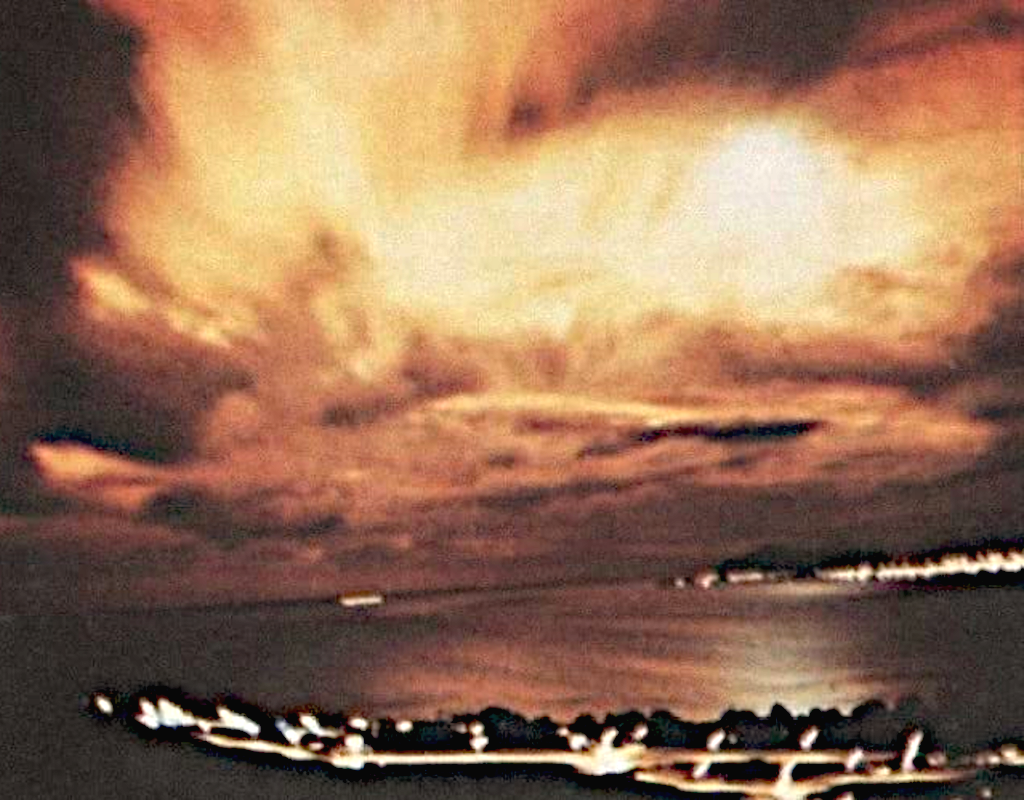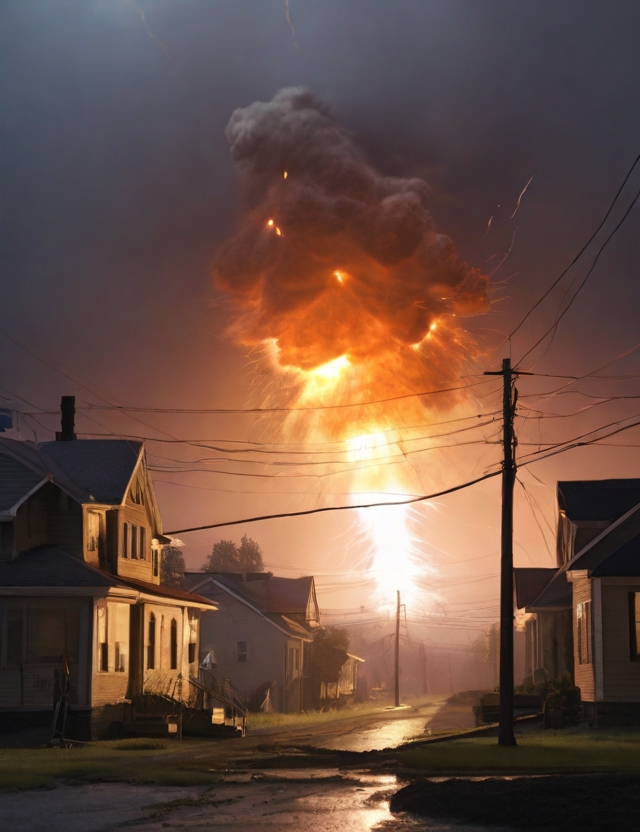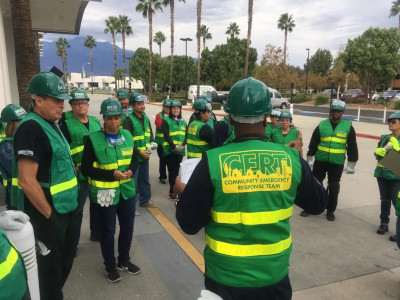by Jared Sorensen
What Is an EMP?
EMP stands for Electromagnetic Pulse. It refers to a sudden, intense burst of high-energy electromagnetic radiation that can disrupt electrical circuits. A large EMP can cause devastating outages of power, communications, and transportation over a widespread area. The danger is not only real, but at this moment the threat is greater than it has ever been in our lifetimes.
The most common cause of EMP is lightning. Perhaps you have known someone who had a lightning strike close to their home that damaged their electrical appliances. Fortunately lightning is quite weak compared to other sources of EMP, and its effects cover only a small area.
Two other sources of electromagnetic pulses are of far greater concern: solar and nuclear. Either of these, according the U.S. Department of Defense, “could wipe out the U.S. power grid—and along with it satellite ground stations, financial markets, healthcare systems, transportation networks, military command and control systems, and the technologies Americans rely on.” The Heritage Foundation further states, “an EMP could cause widespread failure of the electric grids of entire regions, grinding the U.S. economy to a halt. Without electricity, almost nothing will work, which means that millions of people will die as a result of not being able to refill medical prescriptions, millions more will be without food, and predictable rioting and looting can quickly create a state of anarchy.”
Solar EMP

Solar EMP is a natural phenomenon caused when the sun blasts radioactive material into space in the form of solar flares. Sometimes solar flares are so big – often much larger than our planet – that they are called coronal mass ejections, or CMEs. When one of these hits the earth, it can create an EMP that causes serious damage to electrical systems across the globe.
You may recall from your high school science classes that our sun undergoes a regular 11-year cycle of activity. Our sun is currently at solar maximum – the most active part of the cycle where solar flares are re common and more intense. Just in the last few months the earth has experienced several near-misses from flares that could have caused severe problems if they had hit us directly.

The biggest solar EMP event in recorded history occurred on September 1, 1859. The “Carrington Event” was named after the astronomer who discovered two enormous flares coming from the sun. When those flares hit the earth, they lit up the night skies with auroras so bright people could read by their light. This lasted for two days.
In 1859 the most sophisticated electronic technology was the telegraph. People witnessed showers of sparks coming from telegraph lines. Some telegraph operators received severe electric shocks from their equipment. Others reported that their transmitters worked even with the batteries disconnected.
A similar event today would be far more serious due to the greatly expanded use of electrical equipment and sensitive microcircuitry.
Scientists studying tree rings in Japan noticed a strange deposit of Carbon-14 associated with rings dated to the year 774 AD. Similar findings were reported in other parts of the world. The most likely cause, they postulated, was a massive solar flare perhaps 80 times the size of the one that caused the Carrington event.
On average, a solar flare the size of the Carrington event or larger hits the earth about once per century. Which means, unfortunately, that we’re overdue.
Nuclear EMP

An even greater danger is nuclear EMP, which occurs when a nuclear weapon is detonated in the ionosphere – an electrically charged region extending from about 30 miles to 600 miles above the earth’s surface. Such an explosion can cause an EMP capable of wreaking electrical havoc over many thousands of square miles. It is estimated that a nuclear detonation about 300 miles above Kansas could produce an EMP strong enough to disrupt the power grid across the entire continental United States, and the repairs could take two years or longer to complete.
The largest nuclear EMP to occur happened on July 9, 1962 as the result of a failed military test. It was the height of the Cold War, and both the United States and the Soviet Union were building and testing various nuclear weapons. The United States military conducted a series of high-altitude nuclear tests known as Operation Fishbowl. Some of the nuclear warheads were launched with missiles; others with balloons. The largest of these tests was called Operation Starfish Prime. Its mission was to find out what would happen if a nuclear weapon were detonated in the region of the Van Allen radiation belts high above the earth.

A nuclear bomb about 100 times the size of the one dropped on Hiroshima was launched on a missile from an island in the Pacific Ocean. Unfortunately, just after leaving the atmosphere, the engine malfunctioned and the missile started heading back to earth in the direction of Hawaii. Realizing the danger, the mission engineers quickly hit the destruct button, and the bomb detonated in the ionosphere, causing a massive EMP. As shown in this photograph taken in Hawaii a few hours after the explosion, the night skies were lit up for hours from Hawaii all the way to New Zealand. Power failures occurred across much of Hawaii, communications between the islands were cut off, and there were many reports of damaged or destroyed electrical devices. Even the satellites orbiting above the area were affected, with at least nine of them sustaining significant damage.
The danger of nuclear EMP in today’s volatile world cannot be overemphasized. The current wars in the Middle East are expanding, and more conflicts are brewing in Asia and elsewhere. Nearly all the countries involved have or are developing EMP weapons and some have threatened to deploy them against the United States.
The usual first step in a military attack is to disrupt communications, to make it difficult for the enemy to counterattack. What better way to accomplish this than an EMP strike?

While an EMP could certainly be triggered with a nuclear missile, a much more likely vehicle would be a balloon. An incoming missile would undoubtedly trigger an immediate counterstrike. But as we have recently seen, a balloon could easily get into position long before it was detected or determined to be a threat. Besides, a balloon is far less expensive than a missile.
EMP Protection
Any electrical device that has an attached antenna or power cord is highly susceptible to EMP radiation. The antenna or cord picks up the energy and conducts it into the inner workings of the device, where it can easily fry delicate microcircuits. Cell phones, TVs, and radios are especially vulnerable.

The best known way to protect electronic devices from EMP is called a Faraday Cage or Faraday Shield. This is named after British scientist Michael Faraday who, while repeating Benjamin Franklin’s famous experiments with electricity, discovered that an electrical charge hitting a metal box stayed on the outside and did not affect things inside the box. In 1836 Faraday demonstrated this principle by building a cage from steel mesh and bombarding it with electrical charges from a powerful generator.
Today there are many EMP protection devices based on the Faraday principle. Most are still called Faraday cages though they no longer resemble cages at all. There are wallets, key fob holders, cell phone cases, laptop bags, boxes, safes, backpacks, and even Faraday fabric.
There are dozens of sources that provide good-quality Faraday cages and shields. However, there are some that provide little or no protection. Metallized mylar bags are often sold for EMP shielding, but tests have shown that they offer little real protection. Other so-called Faraday cages have gaps or imperfections that let significant amounts of radiation through. When purchasing EMP protection equipment, always do your homework. Read the reviews and check the testing data if it’s available. Make sure you’re buying equipment that will actually do the job.
A couple of brands that I have tested work quite well. The Mission Darkness bags are very good but also very expensive. A bargain brand that also works well is Hodufy.
If you want to save money, you can actually build your own Faraday cage. There are many videos online such as this one that show you how. But again, there are some bad ideas out there. An old microwave does not make a very good Faraday cage, nor does a metal file cabinet. Wrapping things in aluminum foil doesn’t work well either. Mylar bags are often touted for use as Faraday bags, but in my experience they work poorly.
One idea that is often recommended has actually been shown to work very well in tests. That is a Faraday cage made from a metal garbage can, an insulating liner such as cardboard or a plastic bucket, and some metal tape (not duct tape or fabric tape). For best results, use a trash can that has a locking lid. Make sure that no part of the equipment inside the can touches any metal surface. The best way to test the Faraday cage is with a battery-powered FM radio tuned to a strong station and the volume turned all the way up. If you can’t hear the radio inside the cage, you have done the job right.
One final note – Faraday cages are not foolproof. If an EMP is strong enough, some radiation will still make it through. The point is not to block the radiation entirely, but rather to reduce it to the point where it won’t damage the equipment.



